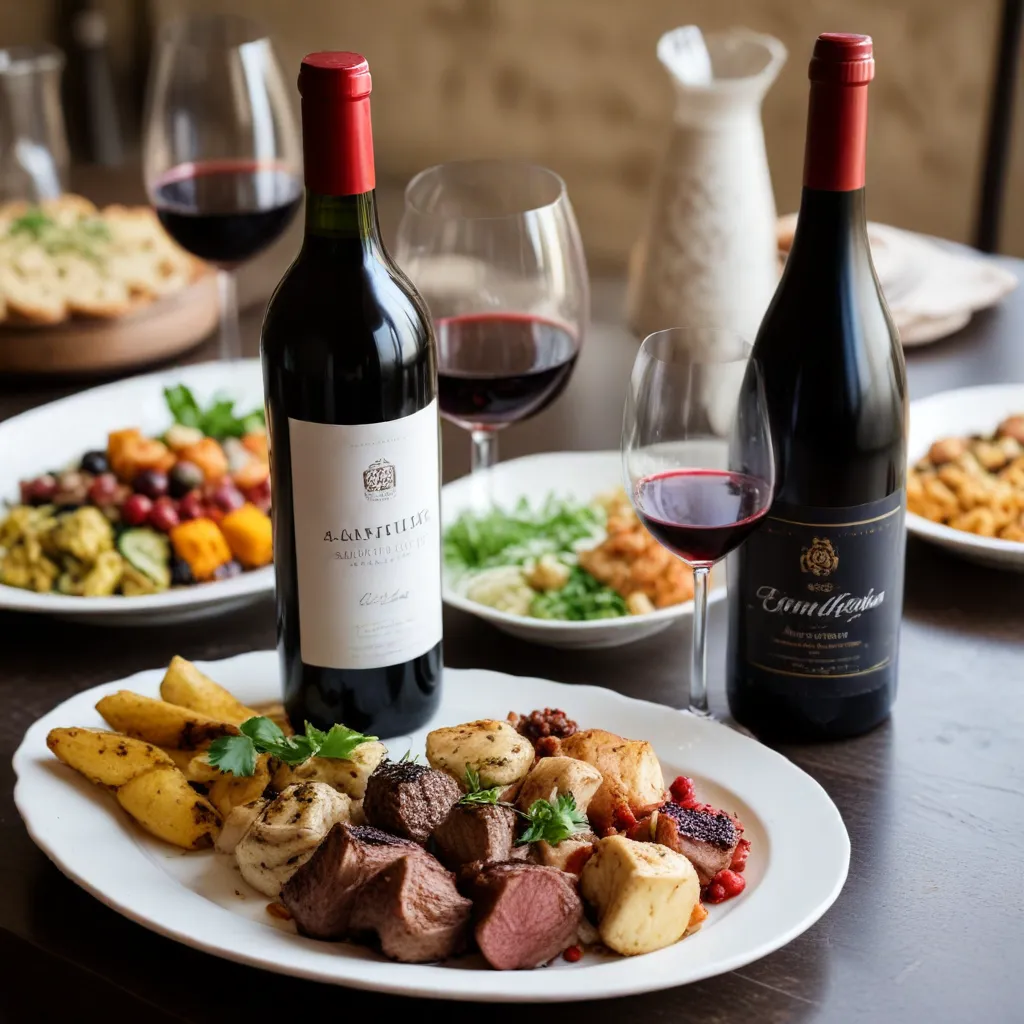
As a hospitality and wine expert at the Wine Garden Inn, I’ve had the pleasure of exploring the captivating world of Middle Eastern cuisine and uncovering the secrets to pairing it flawlessly with the perfect wine. From the aromatic spices that dance on the palate to the diverse array of flavors that tantalize the senses, Middle Eastern dishes present a thrilling challenge for any wine enthusiast.
Wine Pairing Essentials
Understanding Wine Characteristics
Before we dive into the art of pairing, it’s essential to explore the fundamental characteristics of wine that can make or break a culinary match. Factors like acidity, tannin, body, and flavor profile all play a crucial role in determining the harmonious balance between a wine and its accompanying dish.
Exploring Middle Eastern Cuisine Flavors
Middle Eastern cuisine is a vibrant tapestry of flavors, drawing from a rich cultural heritage and a diverse array of ingredients. Aromatic spices like cumin, coriander, cinnamon, and sumac lend their distinct notes, while ingredients like tahini, yogurt, pomegranate, and citrus add layers of complexity.
Principles of Successful Wine and Food Pairing
The key to pairing perfection lies in understanding the interplay between the wine and the food. By identifying complementary flavor profiles, balancing texture and mouthfeel, and considering the overall intensity of the dish, we can create synergistic pairings that elevate the dining experience to new heights.
Exploring Middle Eastern Cuisine
Diverse Culinary Traditions
Middle Eastern cuisine is a tapestry of diverse culinary traditions, each with its own unique flavors and techniques. From the rich, slow-cooked stews of the Levant to the fragrant rice dishes of Iran, and the vibrant, vegetable-centric fare of the Maghreb, the region’s culinary landscape is a true feast for the senses.
Staple Ingredients and Spices
The foundation of Middle Eastern cuisine is built upon a diverse array of staple ingredients and spices. Lamb, chicken, and chickpeas are frequent protein sources, while rice, bulgur, and flatbreads serve as the starchy backbone. Aromatic spices like cumin, coriander, sumac, and cinnamon lend their distinctive flavors, often complemented by garlic, onion, and fresh herbs.
Cooking Techniques and Flavor Profiles
The cooking techniques employed in Middle Eastern cuisine contribute greatly to the depth and complexity of its flavors. Slow-braising, grilling, and roasting help to caramelize sugars and develop rich, earthy notes, while the use of yogurt, tahini, and acidic ingredients like lemon and pomegranate add a refreshing counterpoint.
Matching Wines to Middle Eastern Dishes
Pairing with Meat-Based Dishes
When it comes to pairing wines with meat-based Middle Eastern dishes, such as lamb tagine or shish kebab, look for medium-bodied red wines with moderate tannins and bright acidity. Varietals like Tempranillo, Sangiovese, or Grenache can provide the necessary structure to stand up to the bold flavors of the cuisine.
Pairing with Vegetarian and Vegan Options
For the plant-based offerings of Middle Eastern cuisine, such as falafel, roasted vegetable dishes, or lentil stews, consider medium-bodied white wines with good acidity. Albariño, Vermentino, or Viognier can complement the earthy, umami-rich flavors while providing a refreshing counterpoint.
Pairing with Aromatic and Spice-Forward Dishes
The aromatic and spice-forward nature of many Middle Eastern dishes requires a deft hand when it comes to wine pairing. Off-dry Riesling, Gewürztraminer, or Grüner Veltliner can provide the necessary sweetness and acidity to balance the intensity of spices like cumin, coriander, and cinnamon.
The Art of Balancing Flavors
Identifying Complementary Flavor Profiles
The key to successful wine and food pairing lies in identifying the natural affinities between the flavors of the wine and the dish. Look for ways in which the wine’s fruit, acidity, or even its minerality can echo and enhance the inherent flavors of the Middle Eastern cuisine.
Achieving Harmony in Wine and Food Pairings
Harmony in wine and food pairing is not about simply matching intensity, but rather creating a synergistic relationship where each element elevates the other. By considering factors like texture, mouthfeel, and the overall balance of the dish, we can cultivate pairings that truly elevate the dining experience.
Considering Texture and Mouthfeel Interactions
The interplay between the texture and mouthfeel of the wine and the dish is crucial in achieving pairing perfection. A full-bodied, tannic red wine, for instance, may clash with a delicate, silky-textured hummus, while a crisp, zesty white can provide a refreshing counterpoint to the rich, creamy baba ghanoush.
Navigating the Wine Selection Process
Varietal Characteristics and Flavor Profiles
When exploring the world of wine to pair with Middle Eastern cuisine, it’s essential to understand the unique characteristics and flavor profiles of different grape varietals. Albariño’s bright acidity and citrus notes, for example, can complement the tart pomegranate and tangy yogurt found in many Middle Eastern dishes.
Regional Styles and Terroir Influences
Beyond just grape varietals, the regional styles and terroir influences of wines can also play a significant role in successful pairings. Wines from the Mediterranean basin, for instance, often share a synergy with the flavors of the Middle East, thanks to their shared climatic and cultural influences.
Budget-Friendly and Premium Wine Choices
Whether you’re seeking a budget-friendly option or a premium selection, the world of wine offers a wealth of possibilities to pair with Middle Eastern cuisine. By understanding the nuances of each wine and how it interacts with the flavors of the dish, you can create exceptional dining experiences that celebrate the best of both worlds.
Exploring the art of pairing wine with Middle Eastern cuisine is a captivating journey that’s well worth the pursuit. By understanding the fundamental characteristics of both wine and the diverse flavors of the region, we can unlock a world of culinary delights that will leave your palate thoroughly enchanted. So, let’s raise a glass and embark on this flavorful adventure together! For more information on our winemaking journey and our commitment to using estate-grown produce at the Wine Garden Inn, be sure to visit our website.
